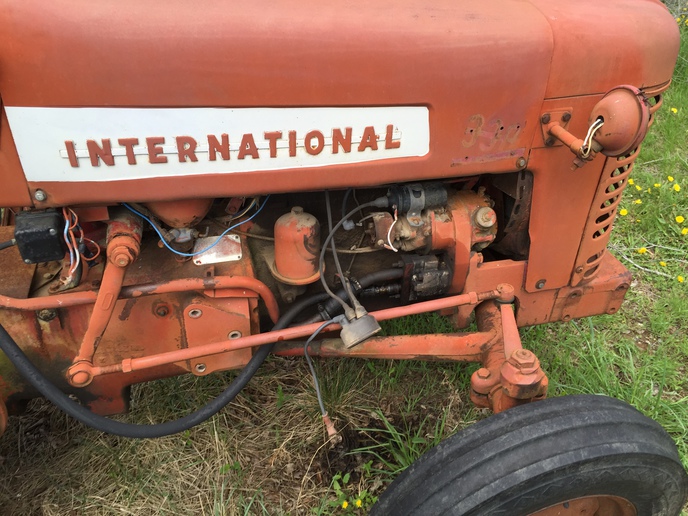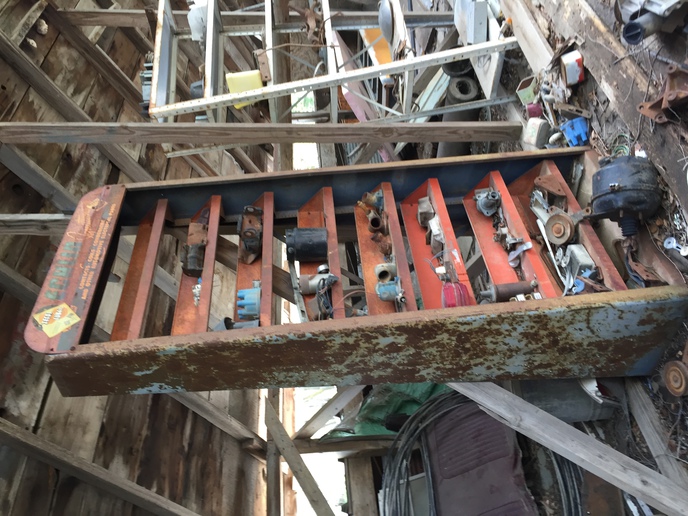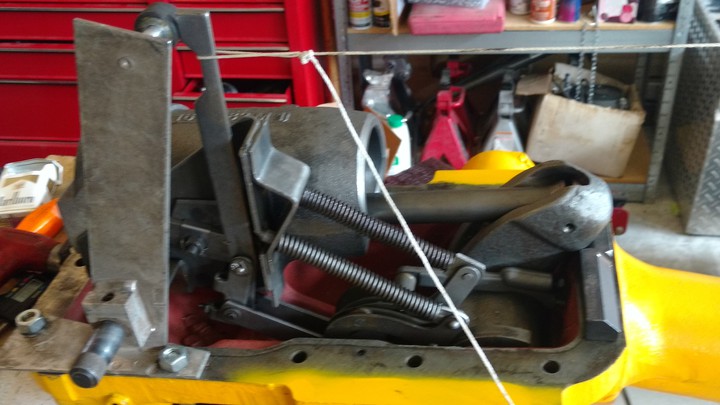You should upgrade or use an alternative browser.
- Thread starter Bkpigs
- Start date
Loosehandle
Well-known Member
- Location
- Wisconsin
damp side stops up,or if your just wildly thrashing
the windrow around. Raking hay is an art, especially
on a side hill.
James Howell
Well-known Member
BANDITFARMER
Well-known Member
Deere Scotty
Member
farmerwithmutt
Well-known Member
how many i am knocking off adjust speed according to that.
If to dry i always set the windrow to the width of the baler
so i can skip raking if i can. also need to set basket on new
holland do you want to dry fast or slow i will make it tight
windrow so it wont dry to fast and get over dry and loose a
lot of leaves when baling i have quit baling and waited till
the dew is on to save leaves. also how is the drawbar set i
will play with the drawbar to stay of the windrow.
One funny story about raking farmer teased his wife about
how she raked hay she said fine cook your own
dinner!!!lesson learned some people are good at cooking
and some at raking hay . thankfully the bar had lunch she
was mad enough to include the hired kid and i never said
anything!
For instance, if it's a weekday and I'm taking time off from work to rake - I'd say no more than 3mph.
I'd much rather be raking than working.
But a big field, with more important things to be doing, I'd be pushing 5mph in most cases.
Depends on the rake being used too. Old IH 4 Bar rake is never much over 4mph. JD 850 or IH 35 can do 5.
We do several smallish fields, all square bales. So not really in it for mass production. A few thousand bales a year. So, never really any need or desire to push the speed envelope to see how fast we can get it done.
Michael Soldan
Well-known Member
I've made the mistake of baling at night once (in Mass.) due to some equipment problems and an impending rain storm.
It was actually very nice, nice and cool. But with the dew, nothing but 100 pound bales - like big sponges.
I see the new pin wheel rakes out raking running like a bat out of hateys. I would guess you will figure out what your rake will do at different speeds in a short time.
Wheatfarmer
Member



Wheatfarmer
Member
It is all about tractor time.
In my case: I have 2 John Deere 594 hay rakes. Even though the rakes are identical model numbers they are different. One of the rakes is around a 1937 model year and has a different gearbox ratio as compared to the other one which is around a 1948 model. The older one is designed more for horse operated speeds or very early tractors that were likely on steel wheels with 3 speed trannys all under 4 mph so slow ground speeds. The later is more towards a tractor speed that would have been found on tractors of the day - still not fast though.
On the Farmall h: I typically rake in 4th gear on the Farmall h at anywhere from 2/3 to full throttle (4th gear is 5.1 mph max at WOT). If I had another gear available besides road gear then I would use it and throttle down more to achieve same speed of 4 to 5 mph. That said the Farmall h is still relatively economical to run considering the technology use here. Pulling a rake does not require much hp. (I also have a Farmall m but have not used it to rake with yet, but my guess is the gear speeds will be just like the h only use more fuel doing it).
If I use my John Deere A: Then I typically use either 4th gear and a lot of throttle (4.5 mph at WOT). 5th gear is too fast with my rakes unless I run at minimal throttle which I have also done. My tractors do not get a lot of use so it depends do I want to idle it or run at some throttle just to get it some work?
Kubuta L285 diesel: 6th or 7th gear and minimal throttle to achieve 4 to 5 mph or so. The Kubota is a real fuel miser and runs on fumes, but the little tired tractor does not ride as smooth over a rough field as those big wheeled tractors do. So the question is do I want to save a little fuel or save my body's back?
uncle henry
Member
redforlife
Well-known Member
Anonymous-0
Well-known Member
chuck machinist
Well-known Member
Tx Jim
Well-known Member
- Location
- Coyote Flats, Texas
(quoted from post at 23:36:47 05/24/14)
I have tried rotaries on two different occasions but despite the whole haying world telling me again and again that I need to use a rotary I have stuck with my JD 640 rollabar. If I go fast enough it tosses it just fine and leaves it nice and fluffy.
The only rotary rake I've witnessed raking made a skinny,tall windrow that I would hate to rd bale. I make my windrows 4.5 ft wide and relatively flat for my Mega-wide PU 4 ft wide rd baler
(quoted from post at 06:55:02 05/24/14) Every person I help has something different and different speeds even in different fields. Just have to see what is happing behind the rake. This is only three of five I run.



Wheatfarmer, where abouts is this that you live. Beautiful country.
(quoted from post at 19:11:12 05/24/14) I rake with a 5 bar rake on either an H or M in fourth gear about 3/4 throttle. Would like to go a touch faster but don't like running a tractor at WOT....
First time, I used my Farmall h to rake the conditions were good and I was running the Farmall h in 4th gear at WOT throttle which was necessary to get some speed. I did not really like doing it either simply because I thought my gas consumption would suffer badly. Surprisingly fuel economy was not bad at all and I was impressed for the technology used here. Like you though, if I had another gear besides road gear, then I would gear up and throttle down accordingly.
Do not be afraid to run the tractor at WOT, they were designed to do it for 24 hours a day/7 days a week at WOT.
Plus if you think about it, Not really much difference running that ole h at 1650 engine rpm's at WOT compared to running a newer tractor that has a 2200 to 2500 WOT engine at 2/3 to 3/4 throttle. (To keep the math easy: 2/3 throttle on a 2400 rpm engine is 1600 rpm). If you look at Nebraska tests even at full throttle the h did not use much fuel under light loads.
Similar threads
We sell tractor parts! We have the parts you need to repair your tractor - the right parts. Our low prices and years of research make us your best choice when you need parts. Shop Online Today.
Copyright © 1997-2024 Yesterday's Tractor Co.
All Rights Reserved. Reproduction of any part of this website, including design and content, without written permission is strictly prohibited. Trade Marks and Trade Names contained and used in this Website are those of others, and are used in this Website in a descriptive sense to refer to the products of others. Use of this Web site constitutes acceptance of our User Agreement and Privacy Policy TRADEMARK DISCLAIMER: Tradenames and Trademarks referred to within Yesterday's Tractor Co. products and within the Yesterday's Tractor Co. websites are the property of their respective trademark holders. None of these trademark holders are affiliated with Yesterday's Tractor Co., our products, or our website nor are we sponsored by them. John Deere and its logos are the registered trademarks of the John Deere Corporation. Agco, Agco Allis, White, Massey Ferguson and their logos are the registered trademarks of AGCO Corporation. Case, Case-IH, Farmall, International Harvester, New Holland and their logos are registered trademarks of CNH Global N.V.
Yesterday's Tractors - Antique Tractor Headquarters
Website Accessibility Policy

